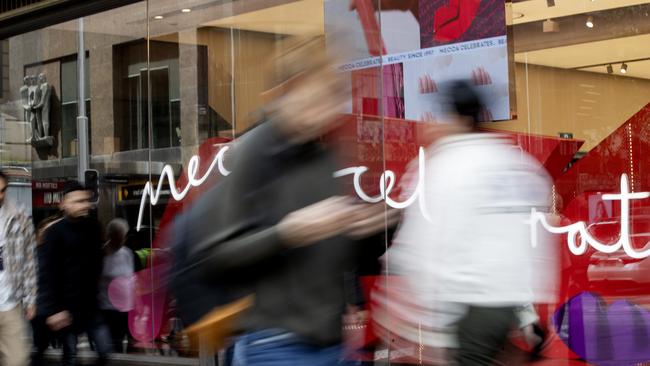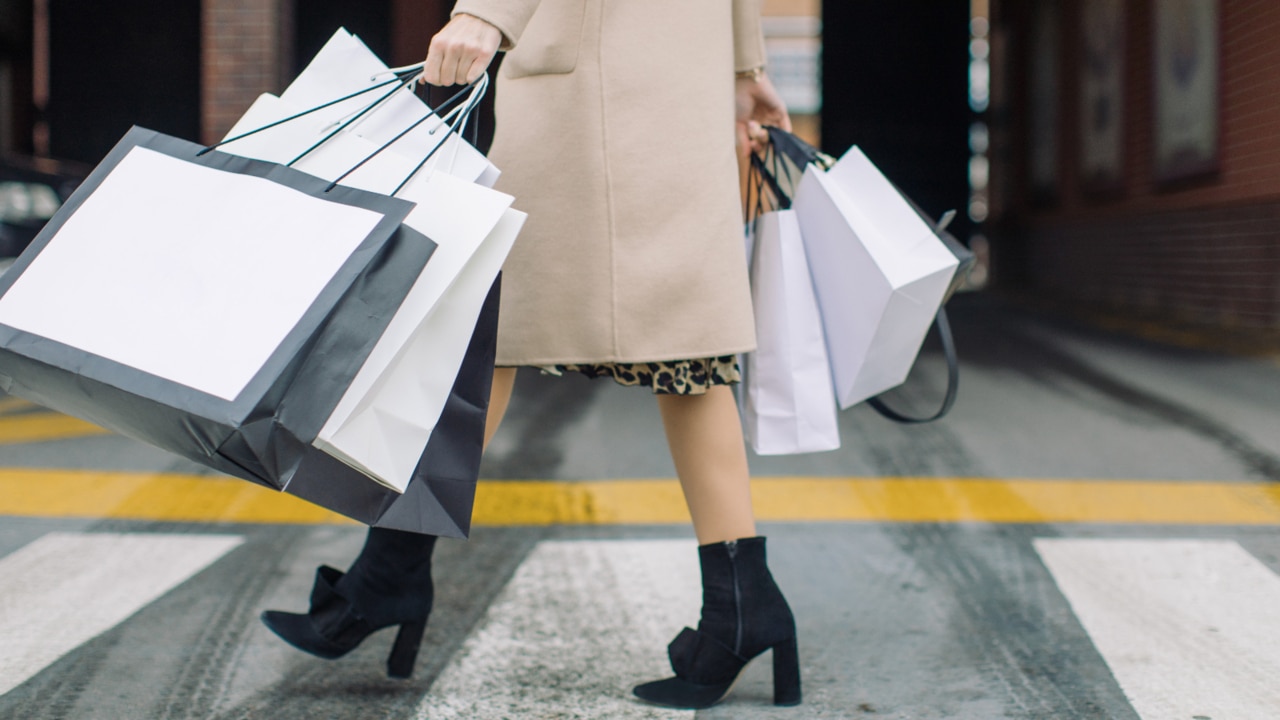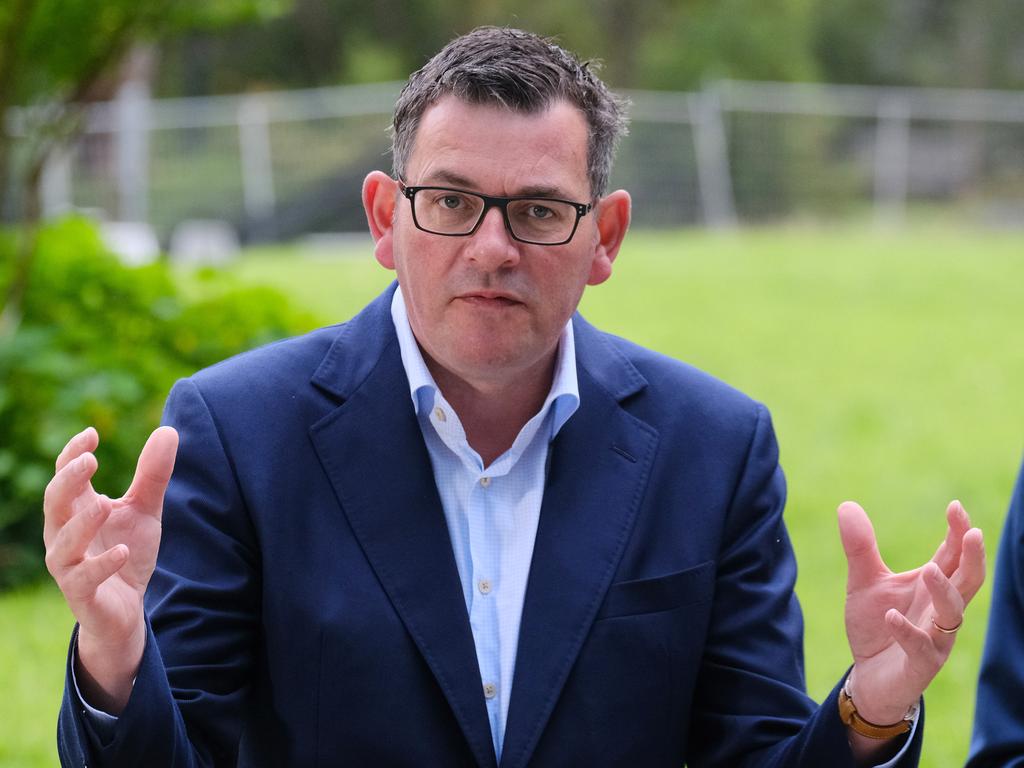Aussies spend another record amount in shops, supermarkets, cafes, could fuel further RBA rate hikes
Australians spent another record amount in shops, supermarkets and cafes in September despite growing cost-of-living pressures.

Australians spent another record amount in shops, supermarkets and cafes in September, as retail trade lifted for the ninth consecutive month despite growing cost-of-living pressures that threaten to sink growth next year.
After hiking rates from 0.1 per cent in April to 2.6 per cent, the Reserve Bank board at Tuesday’s meeting will weigh consumers’ ongoing resilience to soaring inflation and last week’s hot inflation figures against the delayed impact of monetary policy tightening on household budgets.
The consensus among economists and in financial markets is for the RBA to deliver a 0.25 percentage point rise to 2.85 per cent on Tuesday, although analysts have highlighted a real risk of a double hike.
RBA governor Philip Lowe will provide a preview of the central bank’s updated economic forecasts, which will be released in full in Friday’s Statement on Monetary Policy.
Economists believe the RBA could lift its estimate for peak inflation from 7.75 per cent in December, to over 8 per cent.
Despite widespread concern over a “cost-of-living crisis” that is anticipated to bite in coming months as higher mortgage costs and surging power bills bite, the latest retail trade figures from the Australian Bureau of Statistics showed sales lifted 0.6 per cent to $35.1bn in September, to be 18 per cent higher than a year earlier, and 27 per cent up on pre-pandemic levels.

ABS head of retail statistics Ben Dorber said spending on food and eating out were again the prime drivers for the gain.
“Many retailers remained open for the national day of mourning (following the Queen’s death), an additional one-off public holiday in September, and this boosted spending on food, alcohol and dining out,” Mr Dorber said.
More up-to-date ANZ card data has shown a slower pre-Christmas rise in spending on discretionary items in October than in the same month before the pandemic.
Shopping for goods has plateaued – albeit at 23 per cent above the pre-pandemic trend – with spending in cafes and restaurants driving overall retail trade growth this year.
With property declines most acute in Sydney and Melbourne, spending growth in NSW and Victoria came in under the national average, up 0.3 per cent and 0.4 per cent, respectively. That said, ACT trade was up 1.6 per cent in the month, the ABS data showed, despite some steep declines in home values this year.
NAB economist Taylor Nugent said “looking forward, retail sales growth is expected to slow with the lion’s share of the direct cash flow hit from higher rates still yet to be felt in mortgage payments”.
“Lower house prices and lower housing turnover could also potentially weigh, as it has in prior cycles,” Mr Nugent said.

There are, however, some signs that the post-Covid boom in retail trade – underpinned by hundreds of billions in additional savings accumulated courtesy of pandemic handouts and the lowest unemployment since the 1970s – is beginning to wane, if not reverse.
Mr Dorber said inflation-adjusted retail trade figures for the September quarter – to be released on Friday – would reveal how much of sales growth has been driven by higher prices, rather than higher demand.
Westpac senior economist Matthew Hassan said price rises likely accounted for two percentage points of the 2.3 per cent quarterly gain in retail trade.
While a “solid result” over the three months, it was a deceleration from the 3.2 per cent sales growth in the June quarter, Mr Hassan said.
The ABS data showed spending in cafes and restaurants climbed 1.3 per cent in the month to $5.1bn, which was up 50 per cent on a year earlier when major cities were in Delta lockdowns.
Food retailing rose 1 per cent to $13.6bn, the highest monthly spend since the hoarding during the initial phases of the pandemic. Clothing and footwear sales recorded the largest monthly rise of 2 per cent to just shy of $3bn – 37 per cent higher than before the pandemic.
Across the country, the ACT recorded the strongest growth in retail sales – up 1.6 per cent, followed by a 1.4 per cent lift in Western Australia and a 1.1 per cent gain in Queensland. Spending in NSW and Victoria grew a more subdued 0.3 per cent and 0.4 per cent, respectively, while South Australia was the only state to record a drop – 0.2 per cent in the month.
More Coverage






To join the conversation, please log in. Don't have an account? Register
Join the conversation, you are commenting as Logout